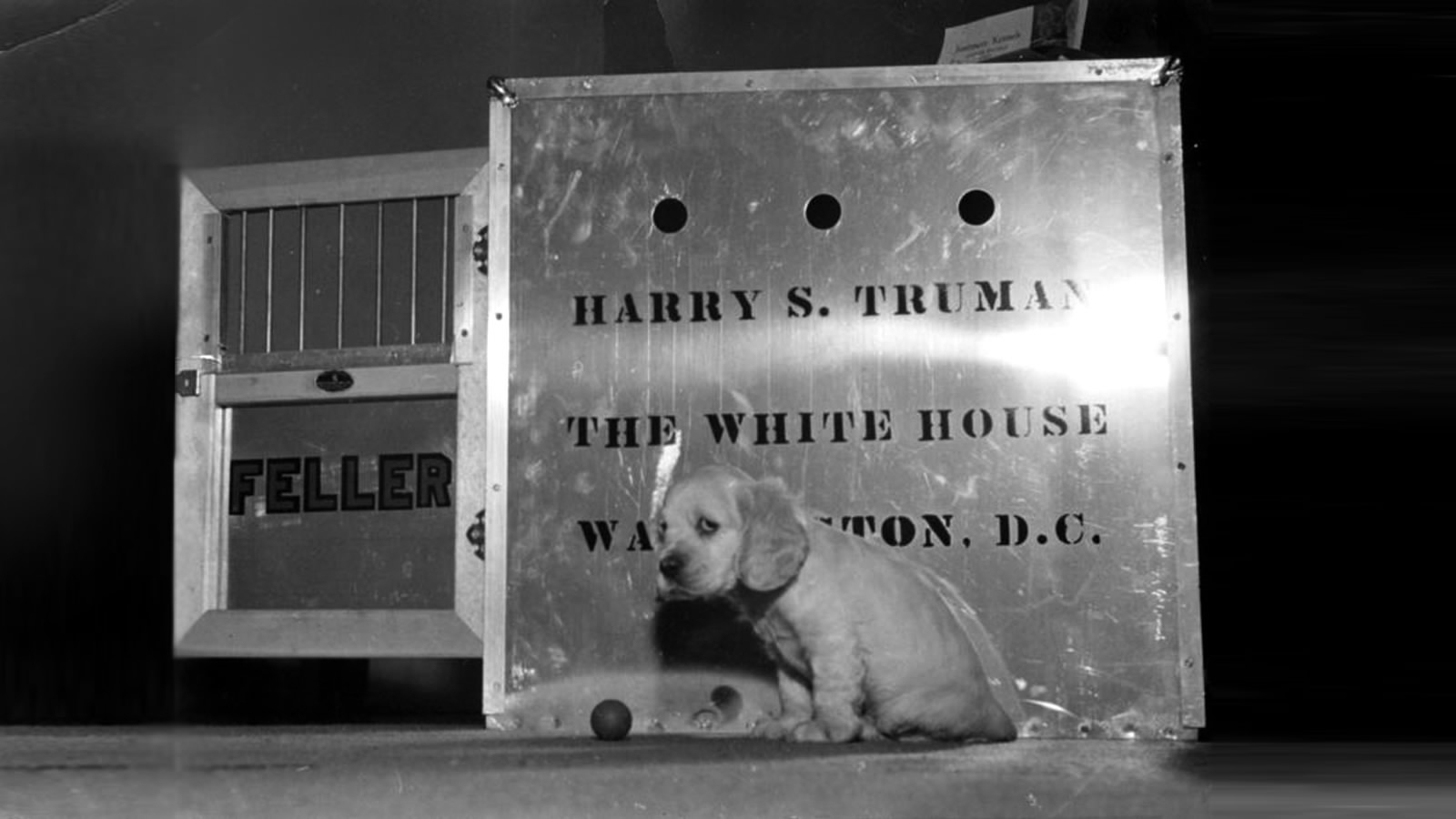After Napoleon Bonaparte broke away from his exile on the island of Elba and set foot in France again, he was said to have vilified those who ditched him at his lows: “There are two kinds of fidelity, that of dogs and that of cats; you, gentleman, have the fidelity of cats who never leave the house.”
Loyalty is a dog’s greatest bond with a human. As noted by Aldous Huxley, author of Brave New World, “To his dog, every man is Napoleon, hence the constant popularity of dogs.”
The scheming and trickery of human politics is probably beyond the capabilities of a dog’s brain, but it doesn’t mean the tales of minor roles the loyal pet has taken up in human power struggles are not intriguing.
With the dawn of the Chinese New Year of the Dog only days away, the stories of a few famous “political dogs” are recounted here. Canines, though not on the front paw in pushing our civilization forwards, can certainly be credited as a significant footnotes.
‘Here, gentlemen, a dog teaches us a lesson about humanity’
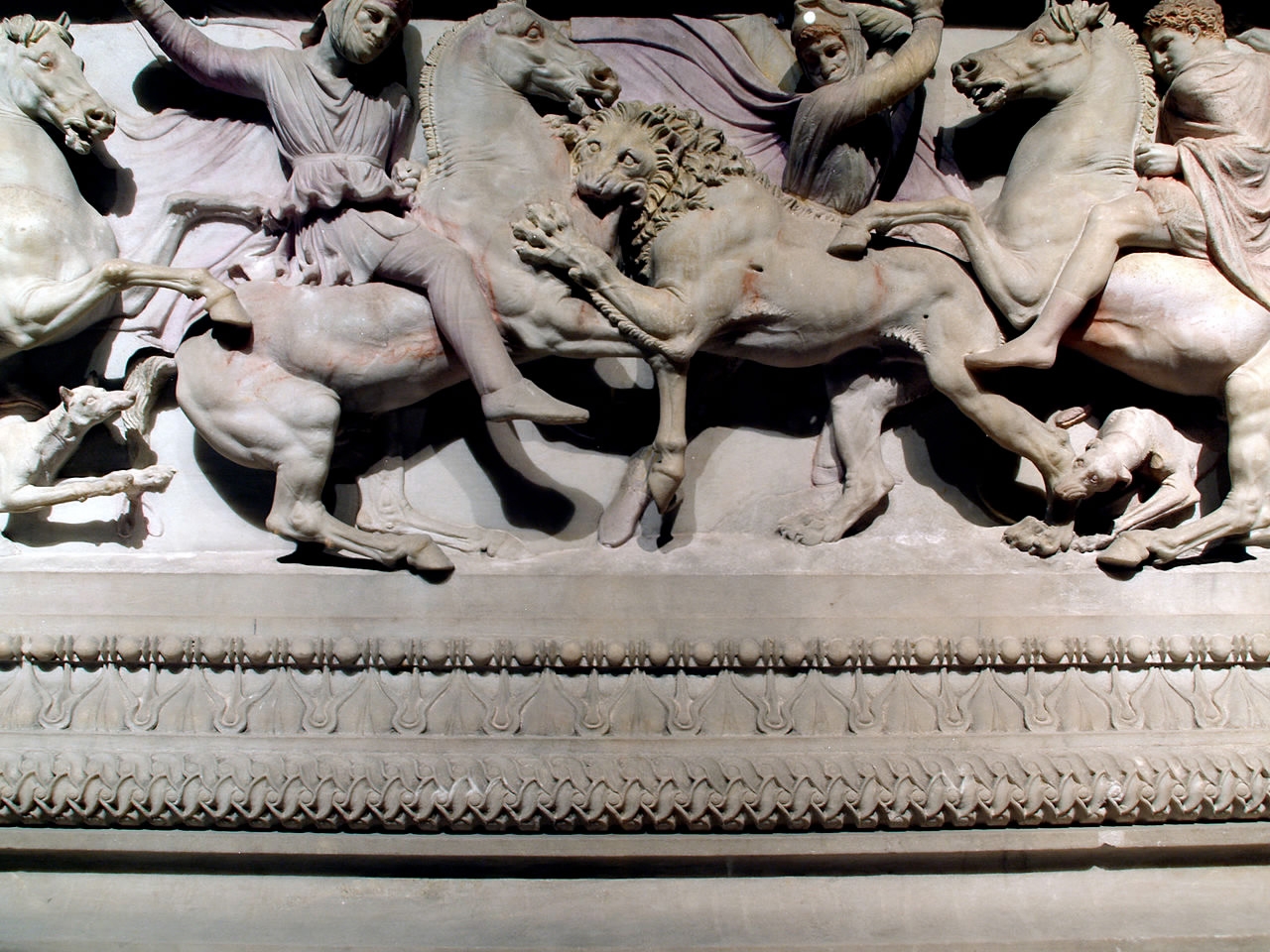
The Alexander Sarcophagus, a late 4th century BC Hellenistic stone sarcophagus adorned with bas-relief carvings of Alexander the Great in lion hunting trip with his dog. /Istanbul Archaeology Museum Photo
The Alexander Sarcophagus, a late 4th century BC Hellenistic stone sarcophagus adorned with bas-relief carvings of Alexander the Great in lion hunting trip with his dog. /Istanbul Archaeology Museum Photo
Humanity could be at the mercy of paws.
One of the earliest accounts of dogs’ heroic deeds that genuinely impacted political history is the legend of “Peritas”. Its act of loyalty and bravery involved no less than saving its master Alexander the Great from being floored by a charging elephant on the battlefield.

Portrait of Napoleon in exile on the island of Elba,1814. /Getty Images Photo
Portrait of Napoleon in exile on the island of Elba,1814. /Getty Images Photo
The history of France, and by extension that of Europe, could have been very different had it not been for a dog credited with saving Napoleon from drowning in 1815. Sailing back to France from Elba ahead of his “Hundred Days” rule, the former French emperor reportedly fell into the sea where “a nameless Newfoundland” kept him afloat until he was fished to safety.
Of his rescuer, Napoleon was said to have gratefully stated: “Here, gentlemen, a dog teaches us a lesson about humanity.”
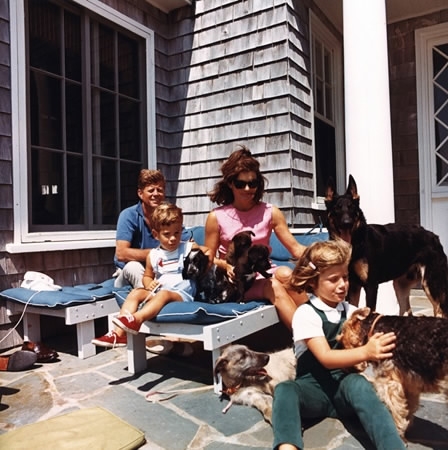
President Kennedy, John F. Kennedy Jr., Mrs. Kennedy, and Caroline Kennedy with Pushinka's puppies Blackie and White Tips, and family dogs Shannon, Clipper, Wolfie, and Charlie, 14 August, 1963. /John Fitzgerald Kennedy Presidential Library and Museum Photo
President Kennedy, John F. Kennedy Jr., Mrs. Kennedy, and Caroline Kennedy with Pushinka's puppies Blackie and White Tips, and family dogs Shannon, Clipper, Wolfie, and Charlie, 14 August, 1963. /John Fitzgerald Kennedy Presidential Library and Museum Photo
A different kind of dog aid is recounted in The Pawprints of History: Dogs and the Course of Human Events.
One afternoon during the height of Cuban Missile Crisis in 1962, an “awfully worried” US President John F. Kennedy suddenly sent for “Charlie,” a Welsh terrier owned by the first family. The dog arrived in the Oval Office as former Soviet Union fleets were moving to a head-on confrontation with American battleships.
“As the long minutes passed, Kennedy continued to stroke the dog and seemed gradually to relax. After what seemed like a very long while, the president signaled to Bryant (Traphes Bryant, the then White House kennel keeper) to take Charlie out. Kennedy smiled as the dog was lifted from his hands – and then, with a look of calm control, he leaned on his desk and said, ‘I suppose it’s time to make some decisions’,” according to the book.
All we know for sure is that the world’s then two largest war machines didn’t collide.
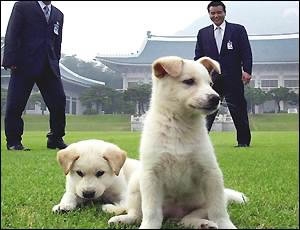
From Pyongyang with love: Unity and Independence. /BBC Photo
From Pyongyang with love: Unity and Independence. /BBC Photo
Sometimes fluffy faces can help thaw relations, even easing deeply entrenched woes across one of the world’s most volatile borders.
Kim Jong Il, the former leader of the Democratic People's Republic of Korea gave a pair of dogs, named “Unity” and “Independence” respectively, to then Republic of Korea (ROK) president Kim Dae Jung during the latter’s historic visit to Pyongyang in 2000. In return, the ROK leader president left his host with “Peace” and “Reunification” – a pair of rare Jindo hunting dogs.
Perhaps it’s time for more “dog diplomacy” when officials from both sides meet at this month’s PyeongChang Winter Olympics.
‘If you want a friend in Washington, get a dog’

President Warren G. Harding and his dog Laddie are photographed in front of the White House, June 13, 1922, /Library of Congress Photo
President Warren G. Harding and his dog Laddie are photographed in front of the White House, June 13, 1922, /Library of Congress Photo
In the political world perception is often as cherished as policies, and the dog is sometimes plays the dual role of family pet and image builder.
The White House has seen many “first dogs,” with powerful owners including Abraham Lincoln, Franklin D. Roosevelt and Barack Obama.
From Theodore Roosevelt, the 26th president of the US, to Obama, the 44th, every POTUS has kept, at least for a while, a dog in the White House. The 33rd president, Harry S. Truman, is questionably credited with the aphorism “if you want a friend in Washington, get a dog” – though he was reportedly not a dog lover himself. He even stirred a protest after giving away a dog that was presented to him by a supporter.
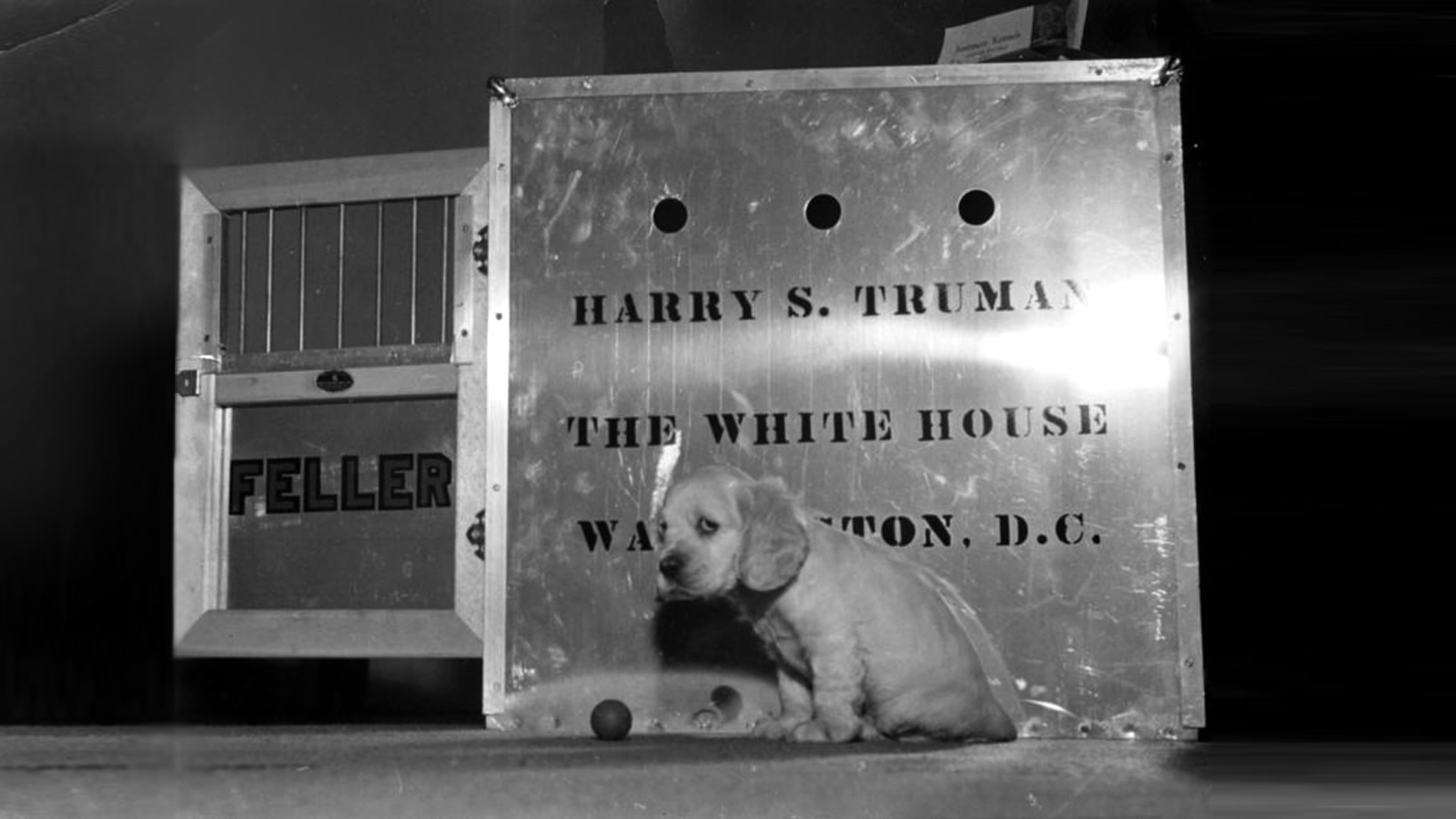
This picture was taken when President Harry S. Truman's dog, Feller, arrived at the White House on Christmas Day, 1947. He was a gift. The Trumans later gave the dog to Dr. Wallace Graham, their personal physician. /Harry S. Truman Library & Museum Photo
This picture was taken when President Harry S. Truman's dog, Feller, arrived at the White House on Christmas Day, 1947. He was a gift. The Trumans later gave the dog to Dr. Wallace Graham, their personal physician. /Harry S. Truman Library & Museum Photo
Despite its dubious provenance, the quotation sheds a light on the “swamp” of Washington politics: owning a dog, at least for the leaders, can help “humanize” their image.
“It (dog) softens their image, it broadens their appeal,” Ed Lengel, chief historian at the White House Historical Association, told CNN. “They help create an atmosphere of the White House as a family, a lived-in place and not just a stiff museum, but a place where a family lives and plays and enjoys each other's company.”
The only US commander-in-chief since Theodore Roosevelt not to keep a dog in the White House is the current occupant. Self-proclaimed “germaphobe” Donald Trump is, as per various media reports, not a fan of the animal. He could become the only US president not to keep a pet in the presidential residence.
‘It doesn't eat journalists, after all’
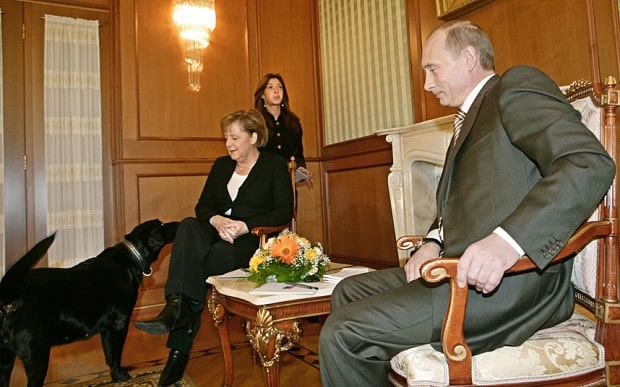
Angela Merkel looks at Vladimir Putin's dog Connie at the Bocharov Ruchei residence in Sochi in 2007. /AFP Photo
Angela Merkel looks at Vladimir Putin's dog Connie at the Bocharov Ruchei residence in Sochi in 2007. /AFP Photo
Lengel’s theory certainly applies to US politics, but not all leaders are dog lovers.
Russian President Vladimir Putin, a known dog fan, “knowingly terrified” the visiting German Chancellor Angela Merkel, who famously fears dogs, in Sochi, Russia, in 2007 with his pet Labrador, Konnie.
Putin later apologized for bringing the animal to the bilateral talks, insisting he wasn’t aware of the chancellor’s cynophobia. According to a 2014 New Yorker profile of Merkel, she quipped, in Russian: “It doesn't eat journalists, after all.”
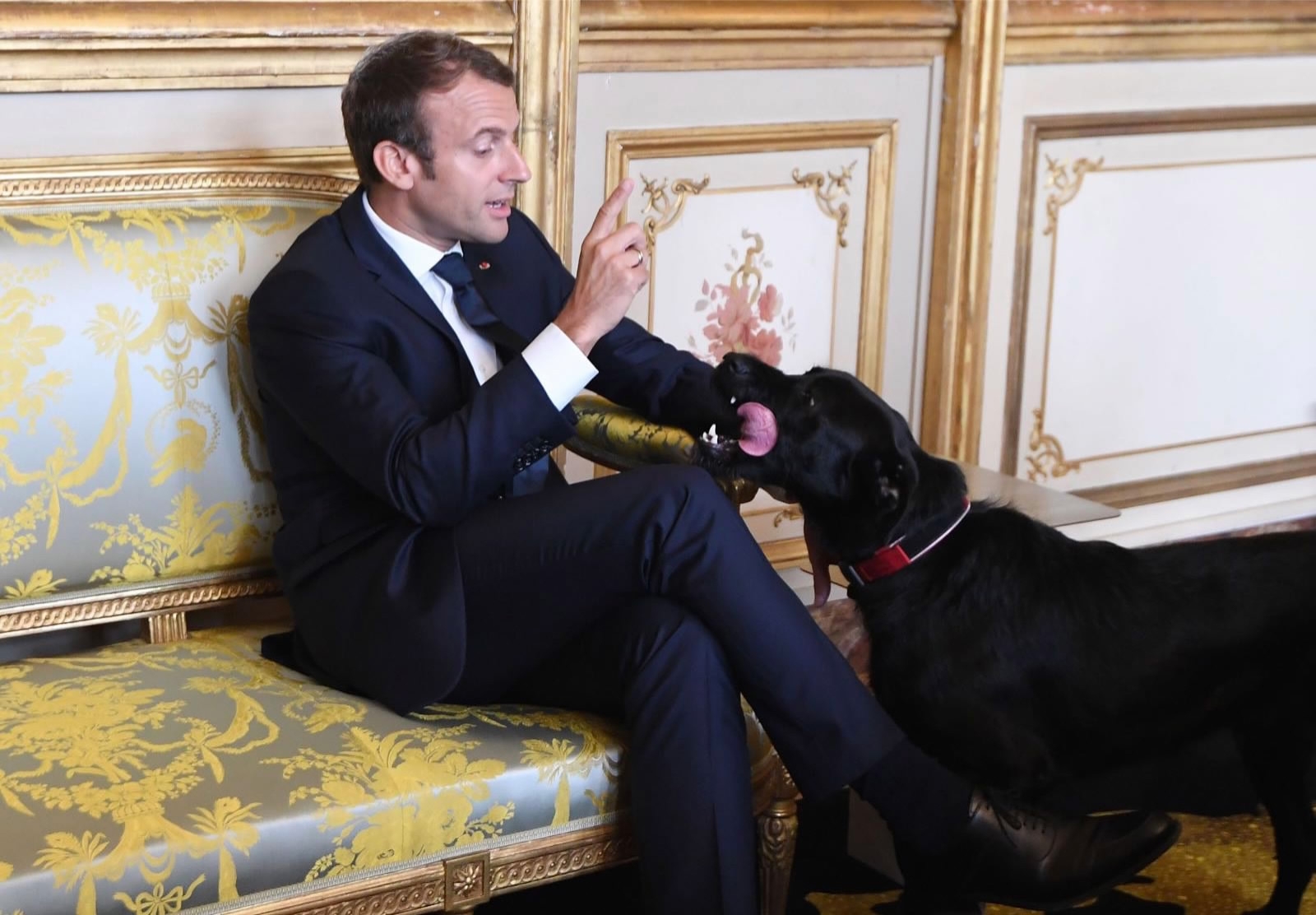
French President Emmanuel Macron gestures towards his dog Nemo during a meeting at the Elysee presidential Palace in Paris on August 30, 2017. /VCG Photo
French President Emmanuel Macron gestures towards his dog Nemo during a meeting at the Elysee presidential Palace in Paris on August 30, 2017. /VCG Photo
Sometimes, a high-profile political dog can be a little “unpolitic,” such as the black Labrador-Griffon owned by French President Emmanuel Macron.
A video that emerged last October amused the world by showing Nemo, the dog, urinating in a fireplace at the Elysée Palace as the French leader held talks with junior members of his government.
A dog is a dog, after all, and even the hearts of the toughest politicians can be melted by the innocent cuteness of the animal.
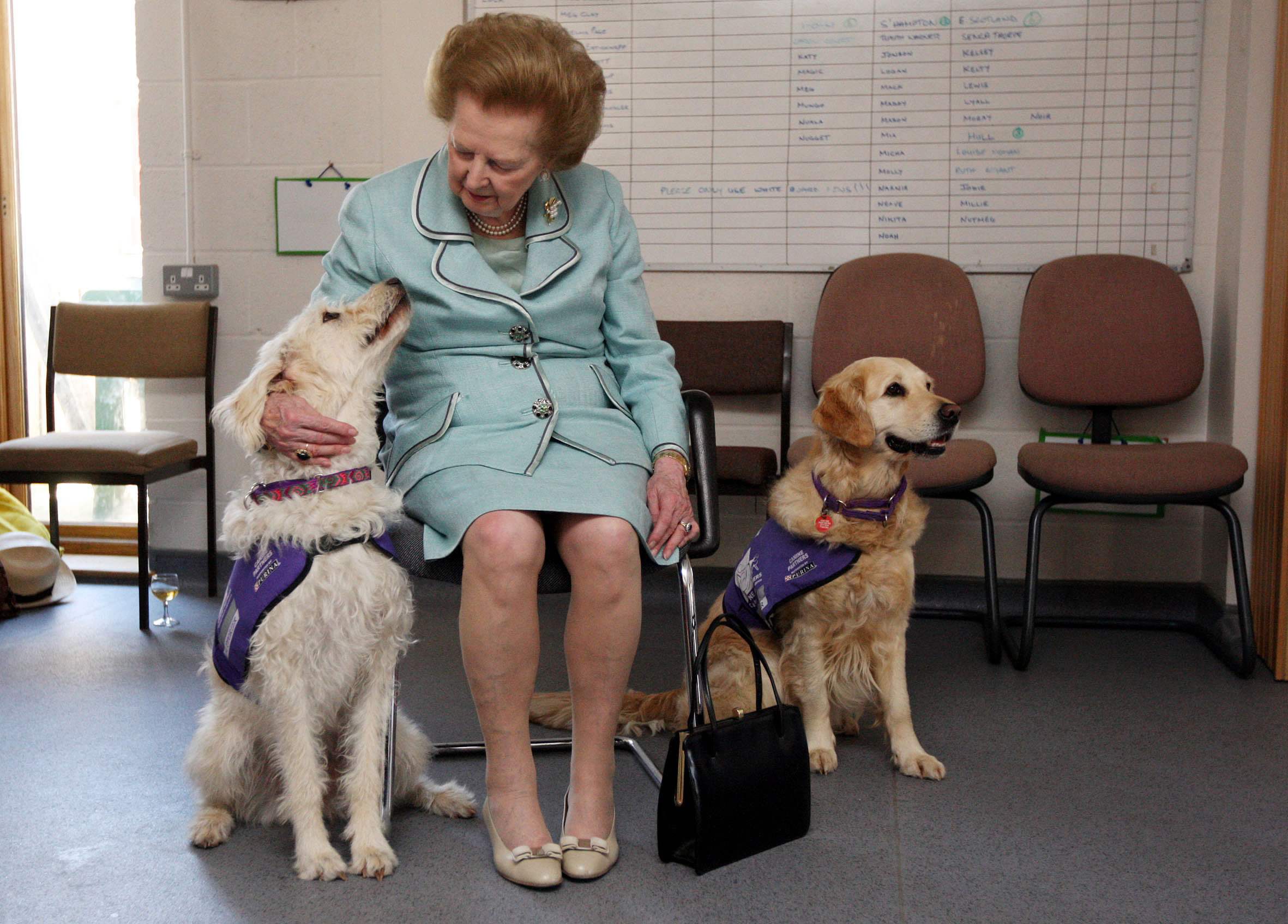
Baroness Thatcher at the opening of the new wing at Canine Partners National Training Centre in Heyshott, West Sussex, 2009. /VCG Photo
Baroness Thatcher at the opening of the new wing at Canine Partners National Training Centre in Heyshott, West Sussex, 2009. /VCG Photo
According to British media, during the final hours of her life, the former British Prime Minister Margaret Thatcher was shown a video of eight playing puppies.
The dogs’ owner, Charles Powell, Thatcher’s private secretary when in government, later told the press that the sight of the tiny newborns had put the “last smile” on the face of the “Iron Lady.”

